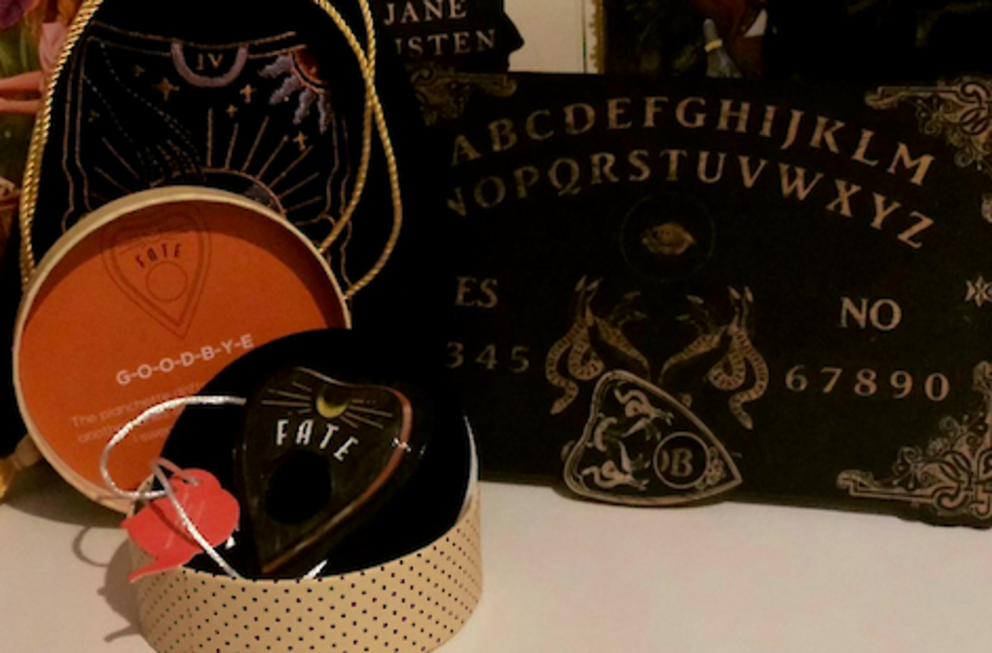Divination
Divination is an ancient art with the purpose to seek knowledge or predict the future through what is thought to be using supernatural methods. Let's look at some of the different forms of divination.
Divination is an ancient art with the purpose to seek knowledge or predict the future through what is thought to be using supernatural methods. Let's look at some of the different forms of divination.
Pendulum divination
This is one of the simplest forms of divination. A pendulum is generally a weighted object which is symmetrical (most often it is a crystal) which is hung from a chain or a cord. Sometimes people use a favourite trinket or a key, metal ball or a bead, as long as it is not something that is magnetic as this would interfere with your results. The aim of the pendulum is to use it as a simple tool for the user to tune into their intuitive powers. It is believed by many that we all have these powers, it is just a matter of unlocking them and fine tuning them. The pendulum itself acts as a receiver and transmitter of information and moves in different ways in response to the questions that you ask.
A person holds the pendulum with a steady hand and asks for a sign of yes. They wait to see a response. Which could be the pendulum swirling in a circle or perhaps rocking in a certain direction back and forward. The person then asks for a sign of no. Once the signs have been established, the user asks yes/no questions. Other people like to use a special board under the crystal which has yes or no and other words or letters on it and people use it in a similar way as they would use a ouija board by looking at where the pendulum is swinging to on the board. Regardless of the method used, a lot of people perceive the answers to be coming from spirit.
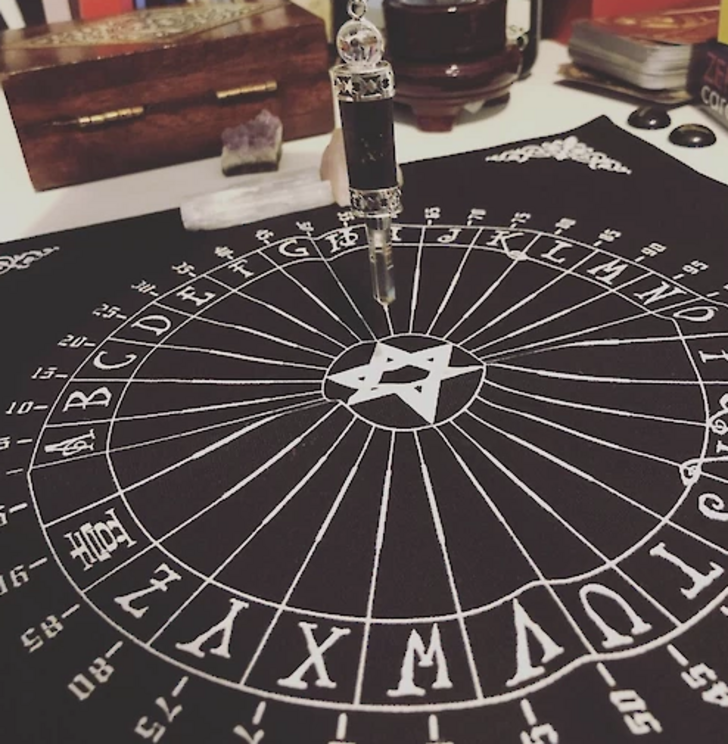
Photo by Sarah LLIFS
Dowsing
The concept of dowsing has been around for centuries. It involves using either a Y shaped or L shaped rod held by a person who will then use the items to search for water or other materials such as metal or oil. Dowsing, also known as divining is said to have been around since Ancient Egypt. While associated mainly with finding water or materials, it is also used for geomancy, healing, divination and even spirit communication.
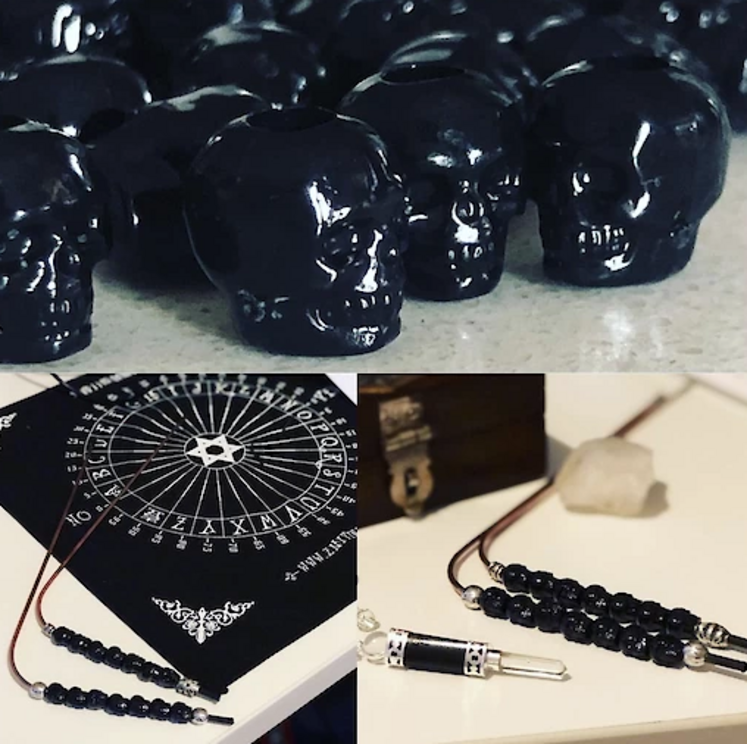
Photo by Sarah LLIFS
There are two kinds of rods which are used either for finding water or for spiritual purposes.
Y Shaped dowsing rod
The Y shaped rod is thought to be the original type used for dowsing. Materials such as copper, steel and even wood was often used. These are also referred to as witching rods, divining rods, forked sticks and water rods. When walking across a field to detect a mineral, the Y rod is known to bend downward when a person crosses water. This is known as the dowsing pull.
L Shaped Dowsing Rod
The L shaped rods were typically used for field dowsing work outdoors with copper being the material of choice. The rods can open, close of cross over when asked a question and are also said to point in the direction where there is water. They are also used in this manner by some to communicate with spirit. They will often ask for a sign for YES and the rods will either separate or cross. They will then ask YES or No questions and do their communication sessions using the rods.
Chiromancy
Otherwise known as palmistry, this is the practice of predicting a person's future by reading the lines in their hand. It is also known as chirosophy and also spelled cheiromancy in Greek. Its exact origins are unknown, however it is believed that this practice originated from Ancient India. It was also seen in China, Tibet, Persia, Egypt and Mesopotamia, but it was in Ancient Greece where it really evolved. In Medieval times, 'witch hunters' thought that this was a sign as a pact with the devil and wasn't practiced as openly as it was suppressed by the Catholic Church. When the Renaissance came by, it became popular again, but it wasn't until the 19th century that it really found it's feet and is how we know it as today. While it does vary among different cultures, the style most known and used today was by a man nicknamed Cheiro.
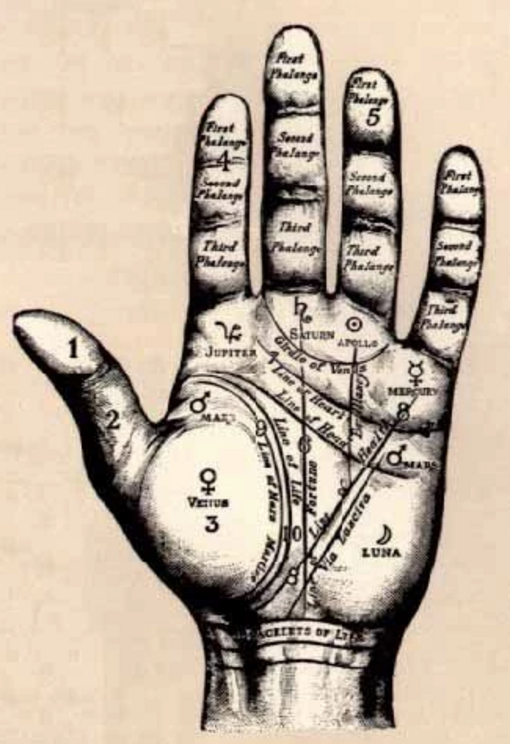
Image Source Pinterest
Scrying
The word scrying comes from the old English word 'descry' which means 'to make out dimly' or 'to reveal'. It uses what we call our second sight. It is not one of our 5 senses, but allows us to see things that we cannot normally see. It is used as a form of divination and self reflection. The first documented accounts of scrying date back to 3000 BC in China. Villagers would use cracked eggs by gazing into the yolk. During the medieval and Renaissance period, there was a big interest in magical philosophy which is where it really became famous and different cultures had different methods in which they would scry. It exists throughout folklore and even in our fairytales (think Snow White and mirror mirror on the wall). Ancient Egyptians would use a vessel filled with oil and would have a young boy gaze into the oil while invoking the name of one of their gods. Other cultures used crystals such as obsidian or smooth reflective rocks. Some would go into dark caves and stare into the darkness, others would simply use a lake or even the clouds in the sky. Some would use mirrors.
One of the most famous scryers would be Michel De Nostradamus or as he is more known as 'Nostradamus'. His 'magic mirror' was a bowl of water with herbs in it where he would meditate and record his visions. In a letter he wrote to King Henry II of France he wrote "Much as, if looking into a burning mirror we see, as with darkened vision the great events".
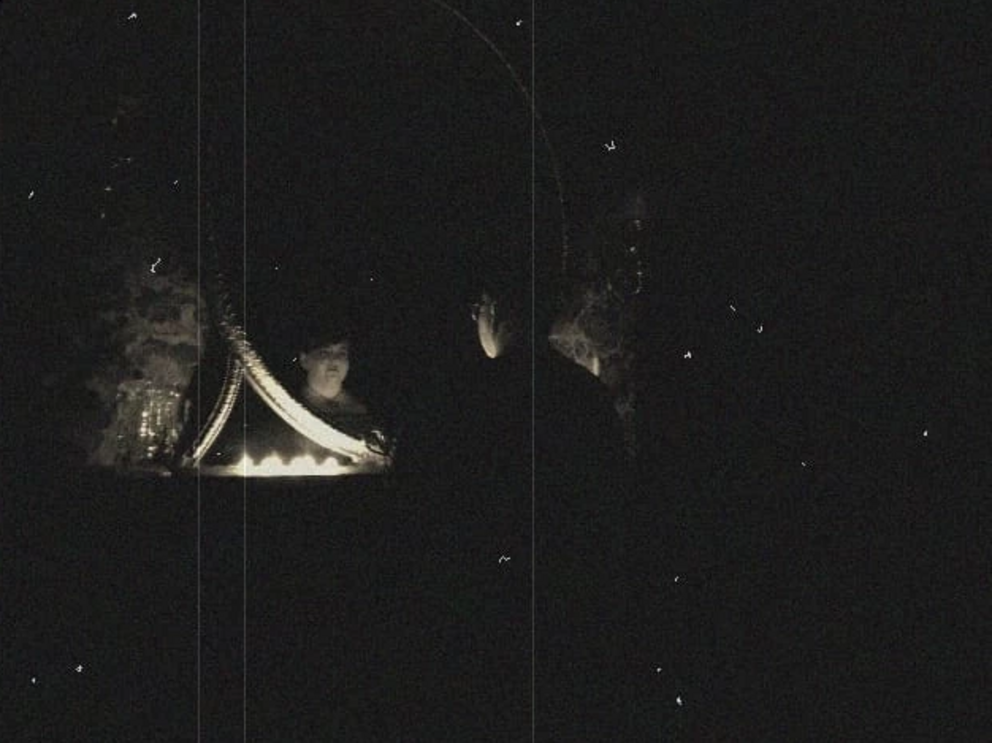
Photo by Sarah LLIFS
Abacomancy
Abacomancy is also referred to as Amathomancy. It comes from the Greek word "amathos" which means sand. A person would have a flat surface and throw either sand, dust or even silt onto the surface. Some even used the ashes of the deceased. They then study the patterns within to see if they can find symbols. The symbols correlate to different meanings which they interpret or 'read'.
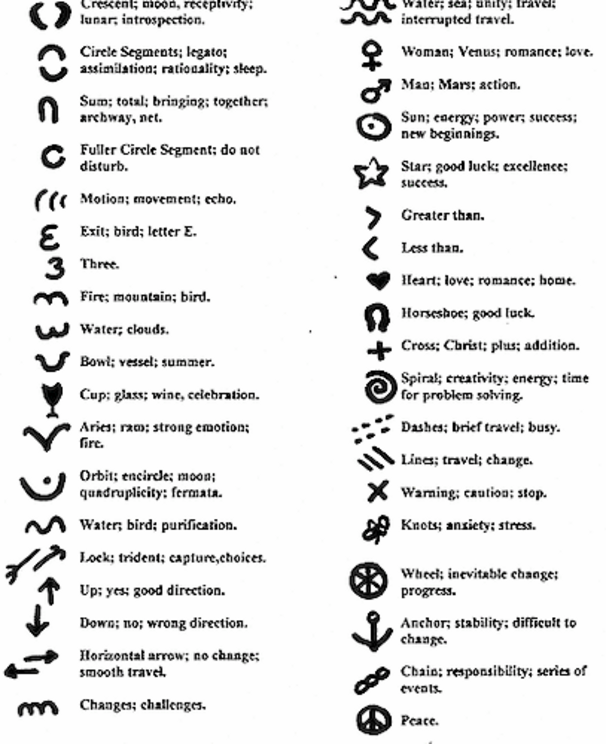
Derek Ustaszewski's "Dust, Dirt, Grime" (1st Edition 1639) p 193 sourced from hogwarts-school
Cartomancy
Cartomancy is a form of divination where a person uses a deck of cards to foretell the future. Soon after playing cards were invented back in the 14th century, divination using the cards soon followed. This eventually evolved into reading tarot cards and even oracle cards.
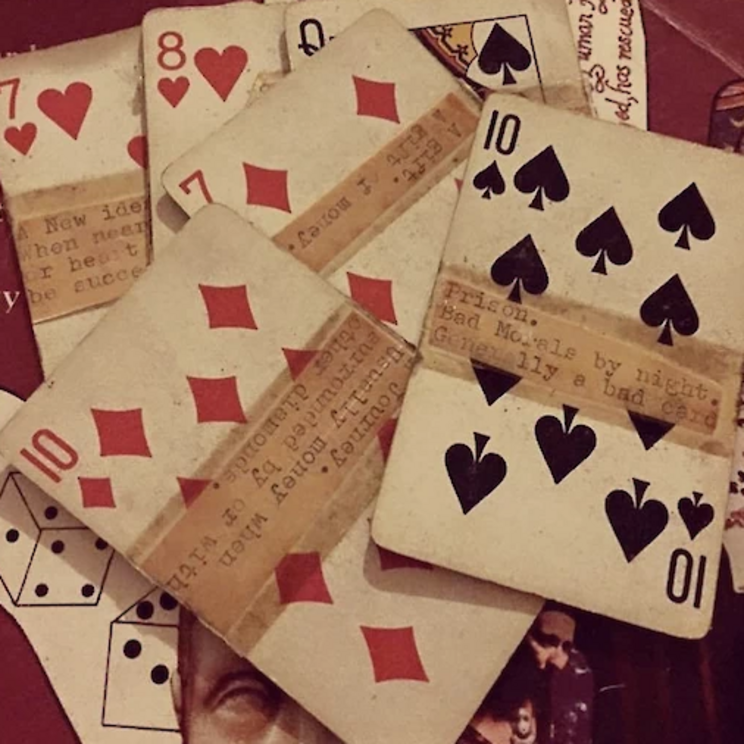
Photo by Sarah LLIFS
The ideomotor effect
A lot of divination practices rely on the person themselves to be a conduit. When they are holding an item, they are often waiting for it to move in the form of a response. While a lot of people perceive the answers to be from the spirit world or a person’s intuition at work, others believe it is a simple reflex of the body. Referred to as the ideomotor effect, it is a psychological phenomenon where a person is subconsciously making movements. They are not purposely moving the pendulum, but by thinking about a certain question for example can trigger a reflex response and their brain makes the body unknowingly move the pendulum, they are just not aware they are doing it. A lot of people also believe that this is what makes a planchette on a Ouija board move.
While people believe different things when it comes to divination, it is important to understand that its purpose is more one of self reflection rather than anything. While some people tap into spiritual abilities to assist with the divining work, others use it as a way to gain mental clarity. It is thought by using forms of divination, that you are tapping into your subconscious mind and accessing information not readily available. Some believe it is a way to help you locate lost items while others believe it can be a way to communicate with spirit. Whatever you believe, divination is a highly personal practice and one that may differ from person to person.
These are a small list of many different divination techniques. If you would like to read about some of these in more detail, you can look at my articles:
Fortune Telling From the 1970's
Join the mailing list to receive weekly updates of NEW articles. Never miss an article again!

